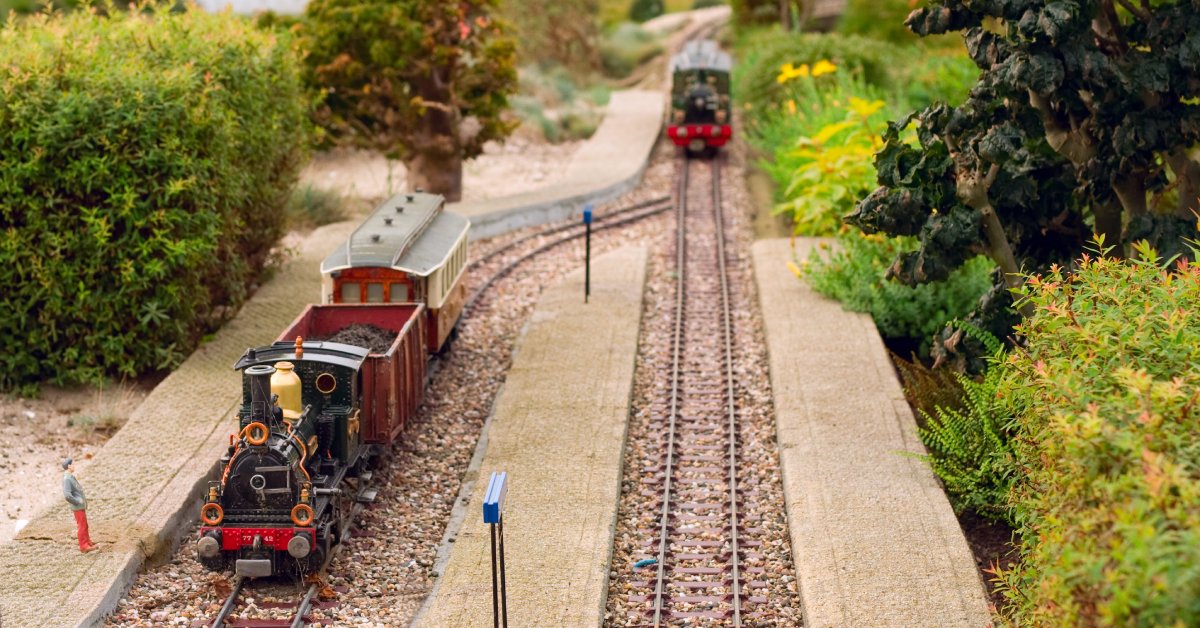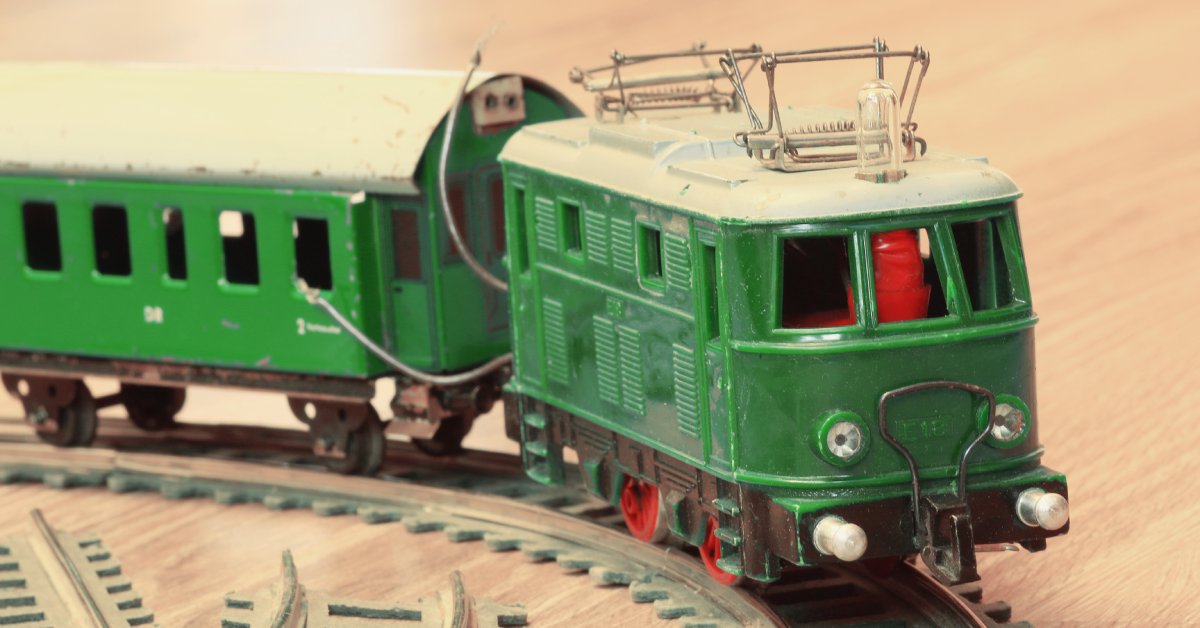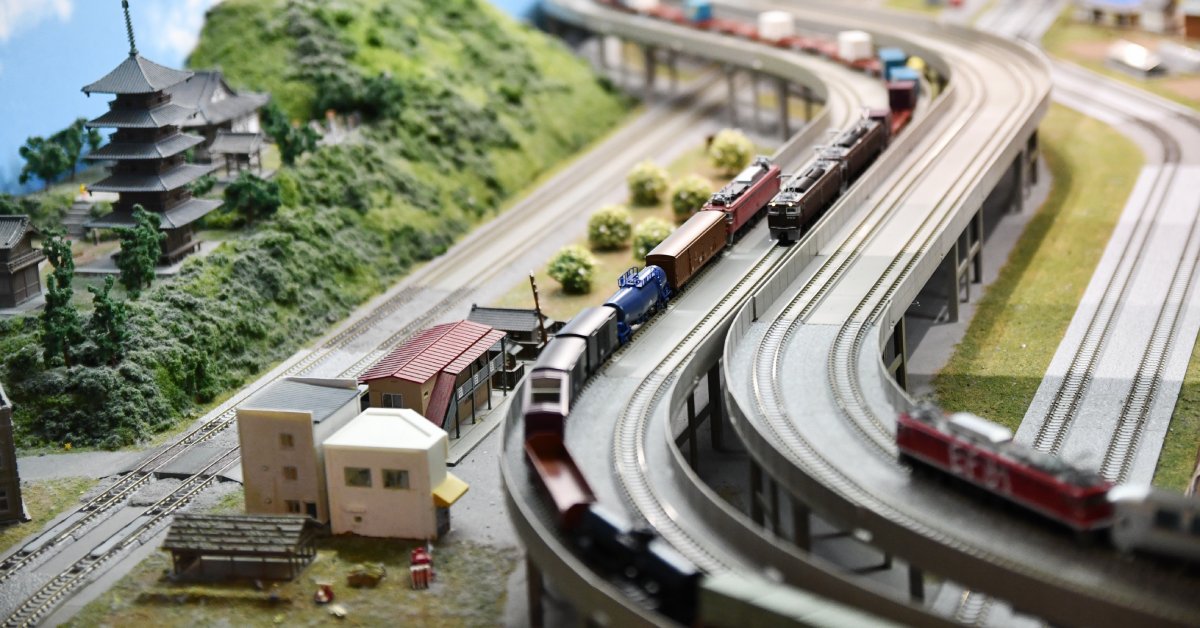Beginner’s Guide to G-Scale Trains: Where To Start
G-scale trains are a great way to get into the world of model railroading. With this beginner’s guide to G-scale trains, knowing where to start can be easy!
by Theodore Hust • September 23, 2025
G-scale trains are a magical way to bring the charm of railroading into your home or garden. These large-scale model trains captivate enthusiasts of all ages with their intricate details, robust designs, and ability to create lifelike railways both indoors and outdoors. Whether you're a complete beginner or someone looking to rekindle a childhood hobby, G-scale trains are a perfect starting point for discovering the joy of model railroading. With this G-scale train beginner’s guide, you can learn where to start your G-scale adventure!
Understand What G-Scale Means
G-scale trains have a size and scale ratio between 1:20 to 1:32 - 1:22.5 being one of the most popular sizes within the scale. The “scale” means they are roughly 22.5 (for example) times smaller than real trains. This large scale allows for stunning details and realism that smaller models can’t achieve.
They are also highly durable, which makes them a great choice for outdoor use in gardens, as they can handle weather and rougher terrain. Indoors, they can transform a room into a detailed railway masterpiece. The size and versatility of G-scale make them ideal for beginners and experienced hobbyists alike.

Decide Whether To Build Indoors or Outdoors
One of the key decisions you’ll need to make is whether to create your railway indoors or outside. An outdoor garden railway adds a unique charm, blending trains with natural landscaping like flowers, shrubs, and even ponds. On the other hand, indoor layouts give you complete environmental control, protecting your trains from the weather while offering unlimited creative freedom.
Think about your space, budget, and the type of atmosphere you’d like to create. Many hobbyists even start indoors and expand to outdoor layouts over time for the best of both worlds.
Choose a Starter Set
Starter sets are the easiest way to step into the world of G-scale trains. These kits usually include a locomotive, a couple of cars, a loop of track, and a power supply, giving you everything you need to get started. Starter sets allow you to begin experimenting right away, and as you gain experience, you can add more cars, track extensions, or accessories to expand your layout.
Understand the Power Options
Powering your G-scale trains is an important consideration, as it affects how your railway operates. The most common option is DC (direct current) or DCC (Digital Command Control) power. Either of these options deliver power through the tracks to the train. However, battery-powered trains are becoming increasingly popular. It’s important that you consider your budget, interest level, and technical comfort when choosing your power source.
Research Reliable Track Materials
G-scale tracks come in various materials, each with its own advantages. Brass is the most popular choice due to its durability and excellent conductivity, making it ideal for outdoor layouts. Aluminum is lightweight and affordable, but may not hold up as well under outdoor conditions.
Stainless steel tracks are incredibly durable and more resistant to weather, though they can be more expensive. If you plan to set up your layout in a garden or other outdoor space, make sure to invest in high-quality, weather-resistant track materials.
Plan Your Track Layout
Designing your track layout is where your creativity truly shines. Start with a simple loop or oval to get your trains running, then gradually expand as you grow more comfortable. Incorporate curves, sidings, and switches to add variety and complexity. Outdoor layouts can wind through gardens, around trees, and over small bridges, while indoor setups can feature intricate designs with detailed scenery. Use graph paper or digital tools to map out your ideas before you begin building.
Know Your Space Requirements
G-scale trains are impressive due to their size, but this also means they need more space to operate than smaller model train scales. Measure your available area carefully to determine how much track you can lay. Outdoor layouts may require landscaping adjustments, while indoor setups might need dedicated rooms or tables. Try to make sure that there’s enough room for trains to navigate curves smoothly and for you to add accessories like buildings, tunnels, or bridges.
Explore Accessories and Scenery
Enhancing your railway with accessories and scenery brings your layout to life. Add miniature buildings, stations, bridges, and people to create a bustling town or countryside. Landscaping elements like trees, grass, and rocks can transform an outdoor layout into a natural paradise.
For indoor layouts, you can paint backdrops or use pre-made scenery pieces to create a realistic setting. Accessories allow you to personalize your railway and make it uniquely yours.
Learn Basic Maintenance
Regular maintenance is key to keeping your G-scale trains running smoothly. Clean your tracks frequently to remove dirt and debris that could interfere with conductivity. Check your train’s wheels for any buildup and ensure all moving parts are well-lubricated. By staying on top of maintenance, you’ll enjoy a reliable and long-lasting railway.
Join Model Train Communities
Joining a model train community is one of the best ways to enhance your G-scale journey. Social media groups, online forums, and local hobby clubs are great places to connect with fellow enthusiasts. Share your progress, ask for advice, and learn from experienced hobbyists who can offer tips and inspiration. Model train communities are welcoming and supportive, making them a valuable resource for both beginners and seasoned collectors.

Start Small and Grow Slowly
It’s tempting to dive in with an elaborate layout, but starting small is often the best approach. Begin with a basic setup and expand gradually as you gain experience and confidence. Adding new components over time allows you to:
- Experiment
- Refine your skills
- Build a layout that evolves with your vision
This approach also helps you manage costs and avoid feeling overwhelmed.
Stay Within Budget
Model railroading can be as affordable or extravagant as you want it to be. Set a budget early on to avoid overspending, especially when starting out. Starter sets are a cost-effective way to begin, and you can add accessories and upgrades over time as your budget allows. With careful planning, you can create a stunning layout without breaking the bank.
Focus on Your Interests
The beauty of G-scale trains is their versatility. Whether you’re passionate about recreating historic railroads, designing futuristic trains, or building a whimsical fantasy world, you can tailor your layout to reflect your interests. Let your creativity guide you, and don’t be afraid to think outside the box.
Enjoy the Process
Above all, have fun! Building a G-scale train layout is a rewarding hobby that combines creativity, engineering, and storytelling. Take your time, experiment, and enjoy the process of bringing your vision to life. The joy of model railroading isn’t just in the finished product; it’s in every step of the journey.
With this beginner’s guide to G-scale trains, starting your model railroading hobby can be fun and easy! Take it one step at a time, connect with others in the community, and most importantly, use the proper G-scale parts from us at Only Trains. Our LGB G-scale trains are easy to use and look beautiful, making them the perfect centerpiece on your adventure with this fascinating hobby.

